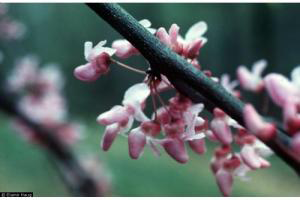Cercis canadensis is used medicinally, and the flowers are eaten, used in salads, fried, and pickled.
Photo Credit: © Elaine Haug, USDA-NRCS PLANTS Database. Courtesy of Smithsonian Institution, Dept. of Systematic Biology, Botany.
Cercis canadensis
Common Name: eastern redbud
Other Common Names: redbud
Plant Functional Group: Deciduous broadleaf
Class > Order > Family: Magnoliopsida > Fabales > Fabaceae
